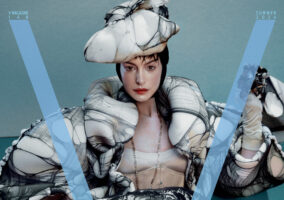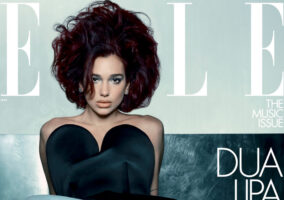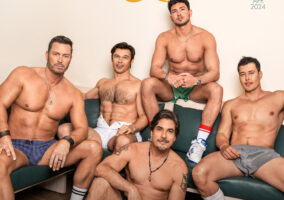W Magazine is celebrating its 50th anniversary this month with a special issue featuring supermodels who have transcended the moment from first emerging on the scene to becoming household names, and rising stars at the beginning of incredibly promising careers. The 17 iconic covers spotlight models Naomi Campbell, Amber Valletta, Iman, Kendall Jenner, Precious Lee, Cindy Crawford, Bella Hadid, Karlie Kloss, Christy Turlington Burns, Shalom Harlow, Alex Wek, He Cong, Adut Akech, Anok Yai, Loli Bahia, Sora Choi and Binx Walton – all discussing the industry’s past, present, and future.
To commemorate the 50th Anniversary special issue, W Magazine has partnered with Bergdorf Goodman to showcase all 17 covers as well as vintage covers from previous years in three bespoke windows. The windows will be on display from September 7th through 19th during New York Fashion Week.
To further commemorate the magazine’s influential history, this fall, they will be releasing the book 50 Years/50 Stories, by Editor in Chief, Sara Moonves. The book is the definitive collection of W’s most iconic and boundary-pushing photographic stories, published over the magazine’s fifty-year history.
Shalom Harlow
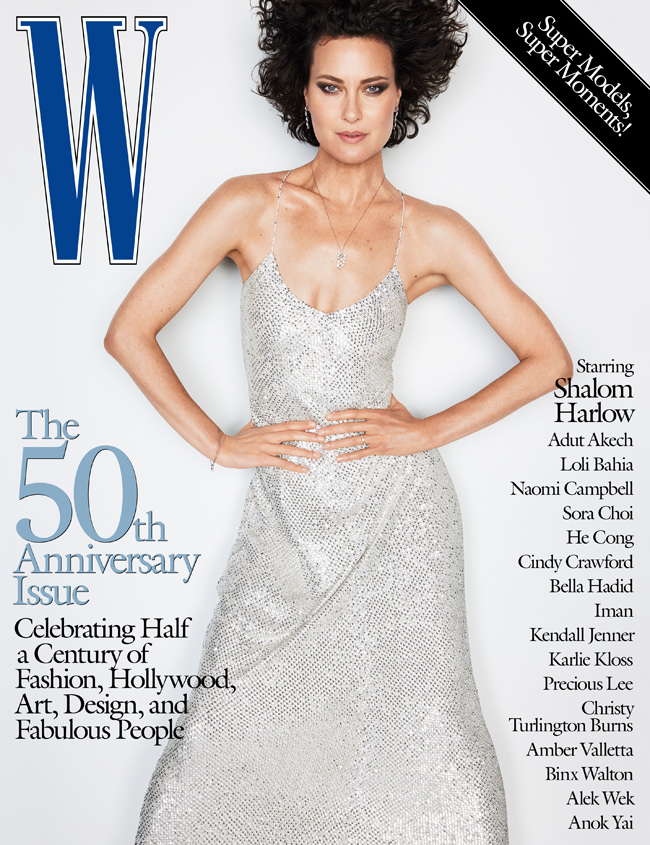
On how she confronted beauty norms: “Amber [Valletta] and I were originally called the ‘anti supermodels,’ and then somehow, at some point, we became known as supermodels ourselves. We were the antidote to the traditional supermodels, because we represented a different aesthetic and we were confronting what the beauty norms were at that point: the Richard Avedon super-goddess glamazons.”
Amber Valletta
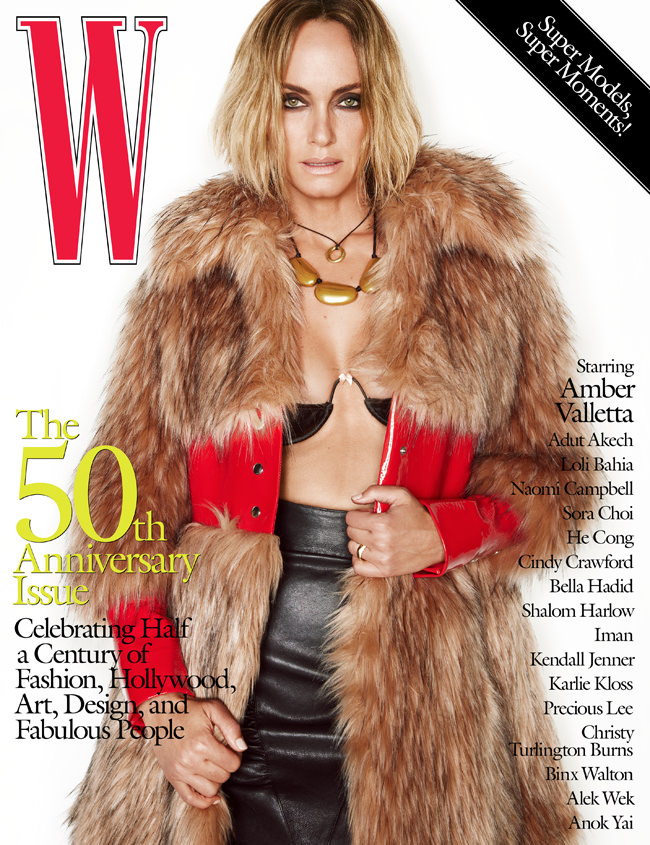
On returning to modeling after taking a few years off: “I took a bunch of years off to act and raise my son, but I never had a doubt that I could pick up where I left off. That sounds arrogant, but I knew I could work, that there was a place for me. When I came back to fashion eight years ago, I had been on some TV shows, and the last one had left a bad taste in my mouth. I wasn’t where I wanted to be. I had more passion for fashion, and I realized I could use all the storytelling skills I learned from working in film and television to be more impactful. I felt like I could dictate more of what I wanted to do, and modeling, for me, has always been about being creative.”
Christy Turlington Burns
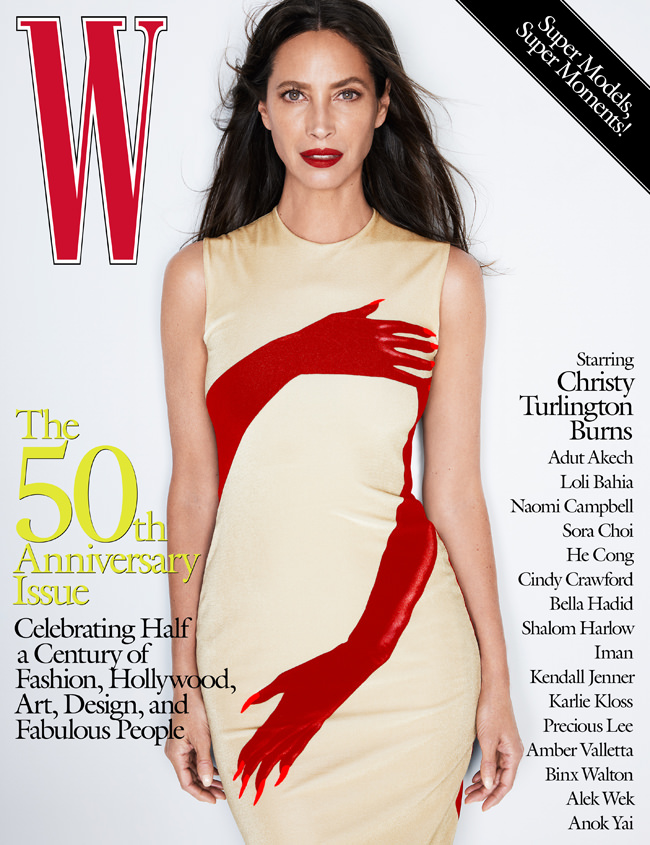
On how her career and opportunities shifted as she grew in the industry: “Early in my career, I signed an exclusive contract with Calvin Klein. I was 19, and it felt very new and exciting and prestigious, but I wasn’t really ready for it yet. It was lonely, almost like I had an Old Hollywood studio system contract. After a couple of years, I was able to renegotiate, to be out there working with other designers and photographers again. The moment of the supermodel was happening. Some of us did the video for George Michael’s ‘Freedom! ’90’ and came out on the Versace runway lip-synching the song. The excitement was great for a while. People forget that there’s a fair amount of theater to fashion. It’s not necessarily a reflection of reality.”
Kendall Jenner
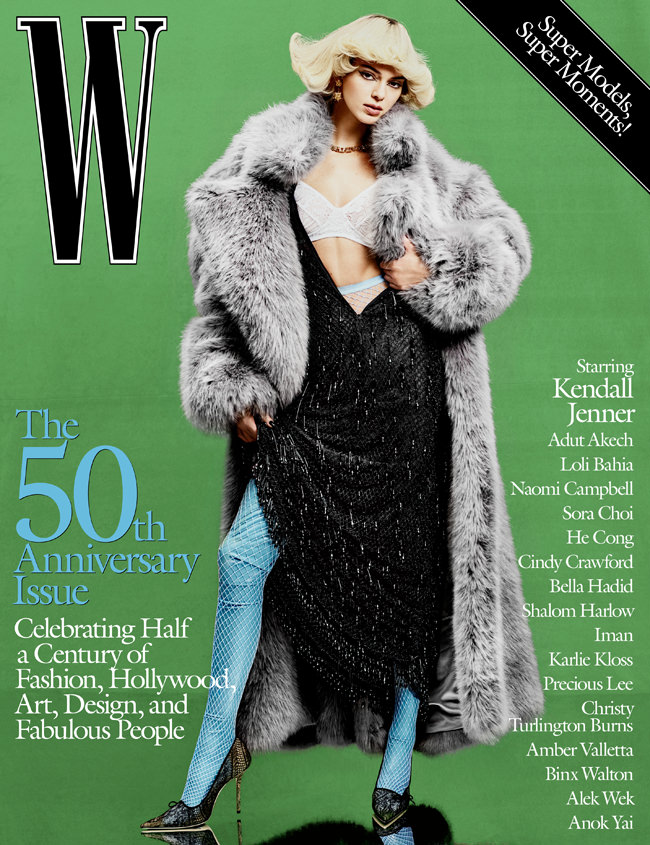
On the evolution of modeling and the impact of social media: “I was 14 when I first started modeling, and 16 or 17 when I came to New York and started taking it super seriously. A lot has happened in 10 years, and the evolution is exciting. We’re on social media more than we were five years ago—or even one year ago. And social media has absolutely opened up the fashion world to so many different people and ideas. We’re always expanding into new apps and new platforms and new things. It’s bringing the audience into the whole experience and really pushing people in the fashion world to be their most creative selves, to think, What can I come up with next?”
Precious Lee
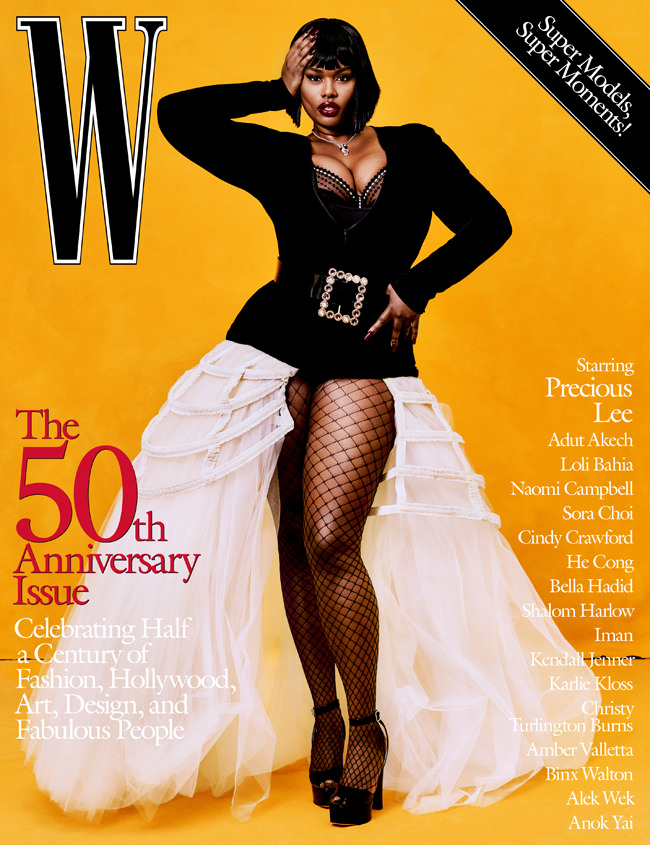
On being curvy in the fashion industry: “I inherited a sense of who I am and of my worth from my mom. I’ve always reached for the top. My goals have always been huge. I’ve been in rooms where people truly did not understand how I could aim that high or believe that I could accomplish what I wanted to do. So this moment, with the runways that I’m gracing, proves exactly what I was saying. I’ve always been a curvy girl, since I was a child, and I feel like that child would really appreciate what I’m doing now.”
Bella Hadid
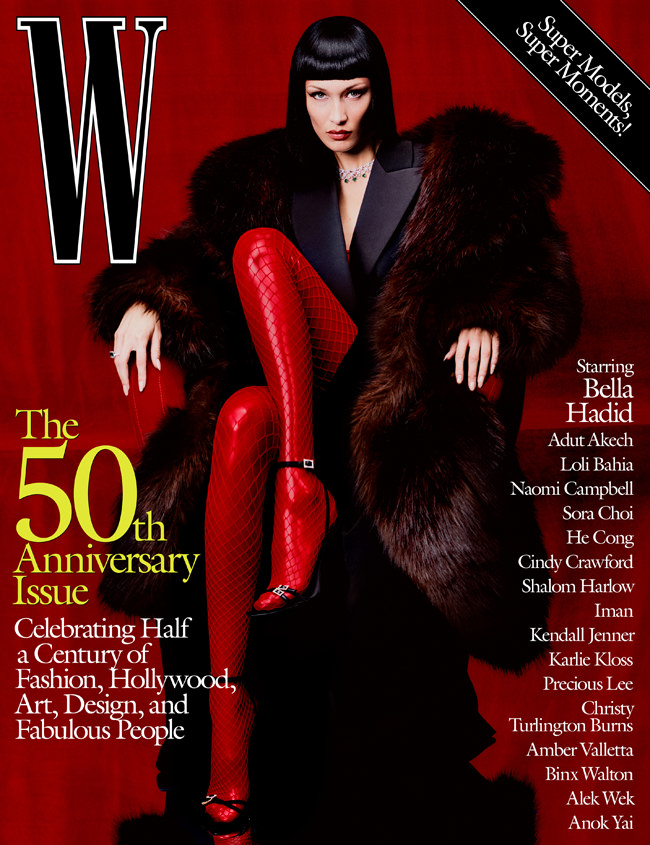
On gaining confidence as a model after years of imposter syndrome: “Modeling was always in my stars, and I had to accept that. My mom grew up modeling, and my sister, obviously, is incredibly successful and great at her job. At the end of the day, I think we all have this work ethic of wanting to be the best at whatever we do, and I knew that if I worked my butt off, I could succeed in this business. Still, it took a really long time to not have impostor syndrome. To be honest, it’s only been in the past year that I’ve felt confident in my craft. Now I know what I want to do, who I want to work with, and what I like and what I don’t like.”
Anok Yai
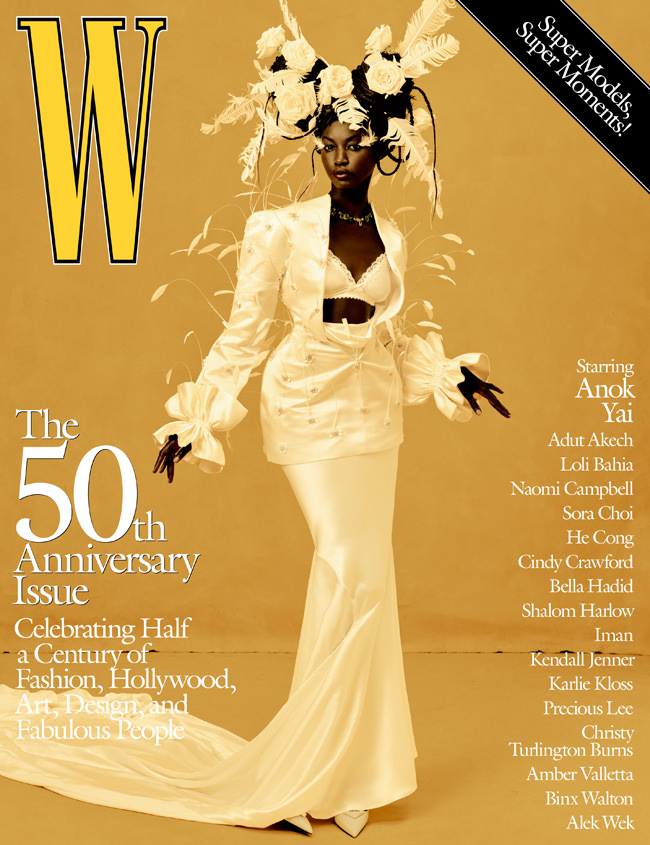
On the impact the Pandemic has had for models: “Since the Covid pandemic, models have had more creative control. I’ve had the opportunity to creative direct some shoots, and at this stage of my career, I can be more than a model—I can be an artist. At the end of the day, a runway show is a collaborative effort. As a model, you can sometimes feel like just a hanger. But when I’m on the runway, it feels like a performance. I’m at a point now where if you don’t give me artistic freedom, I’m just going to take it.”
Adut Akech
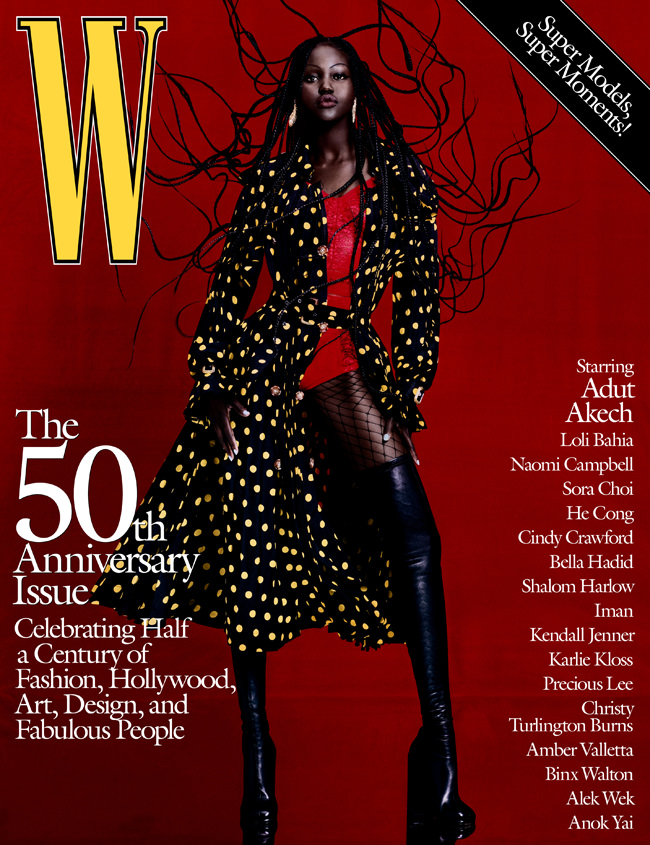
On how social media has pushed the shift towards inclusivity: “I wanted to be a model because I was inspired by women like Naomi Campbell from a young age. One thing that came as a shock was how hard this job is. I never thought it was going to be the easiest, but you truly don’t know until you’re doing it. But social media has allowed models to have a voice. We can call out brands for not being diverse enough. It’s forcing everybody to change their old ways and do what should’ve always been done: be inclusive of models from all different backgrounds.”
He Cong
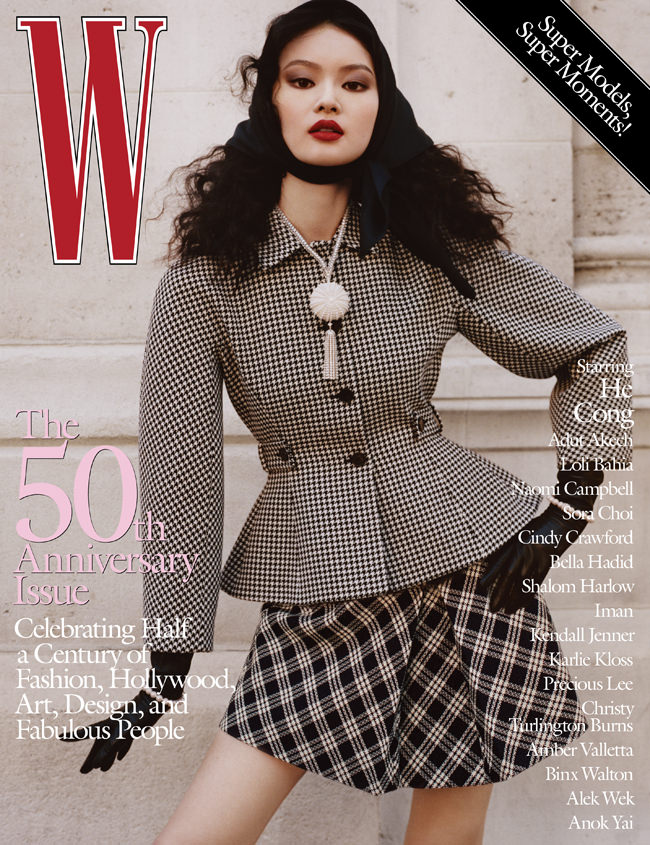
On the definition of beauty in the fashion space is changing: “Every new season, it feels like it is my first booking. I want to do as many runway shows as possible, and I hope to get big campaigns and covers. The goals are endless. Right now, the fashion world is becoming a more inclusive space where different types of beauty can coexist. It’s an amazing thing, to celebrate so many diverse body types, ethnicities, and gender identities. The industry has evolved so much, and I think the future of modeling will be more exciting and more interesting. We still have a lot of work to do, but we are on the right path.”
Naomi Campbell
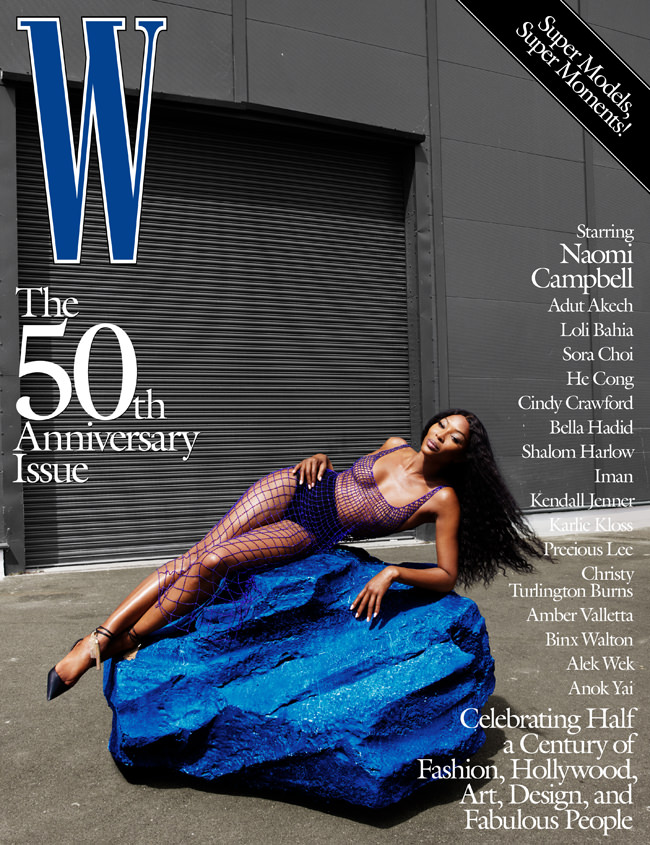
On using her influence to help elevate young designers: “I like what I do, first and foremost. You have to, to have a career that really goes on. There is no career strategy on my end, but at this point, I love using the platform that I have to help young designers. The kids I work with are not just in the markets we know, but in Africa, the Middle East, India… and because people know me and I’ve come to understand the fashion world so well over time, I can get them the attention that they deserve. Fashion has provided me with so much, and it’s my philosophy to share that.”
Sora Choi
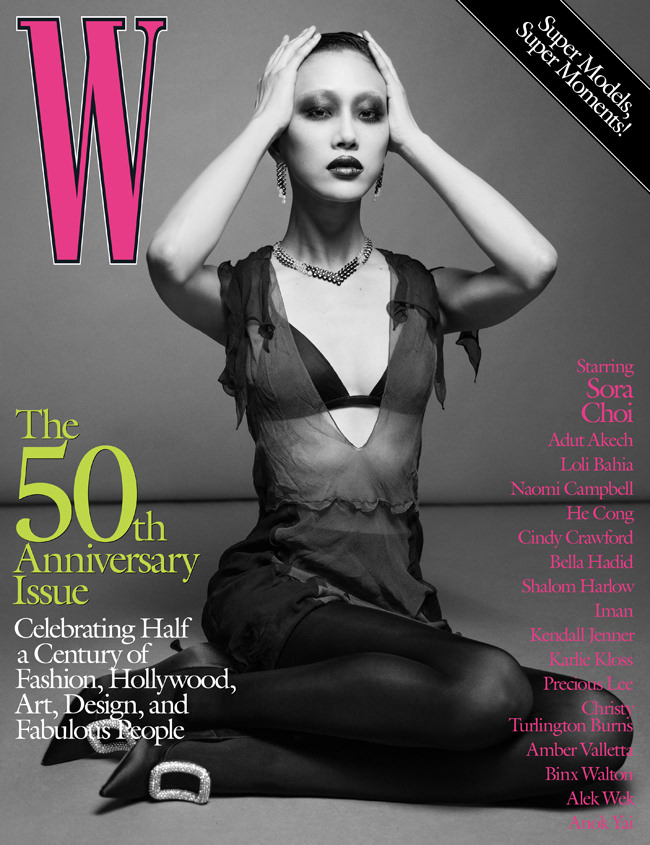
On how modeling internationally has made her a more confident and passionate: “I wasn’t able to fully bloom in Korea compared to now. It might be hard to believe, but I was a very shy and timid girl back then. It’s been a while since I debuted internationally, and that transition allowed me to love being a model. I’m proud of the fact that I’m so passionate about my work. The best shoots inspire me to be a better version of myself.”
Karlie Kloss
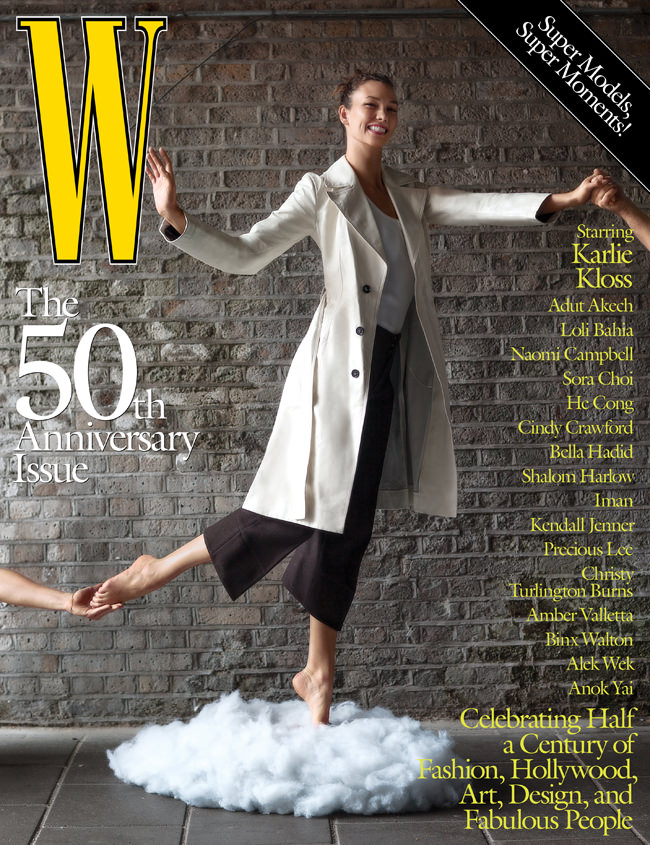
On the power of experiencing a show in person before smart phones: “I started my career at the end of what some people call the ‘twilight years,’ right before social media took hold. And I do feel grateful for that timing, that I got those sweet last moments before the industry changed. When I was backstage at that very first show I walked in, for Calvin Klein, when I was 15, nobody had a smartphone. You experienced the show only if you were in the room. There was something so powerful about just being there.”
Loli Bahia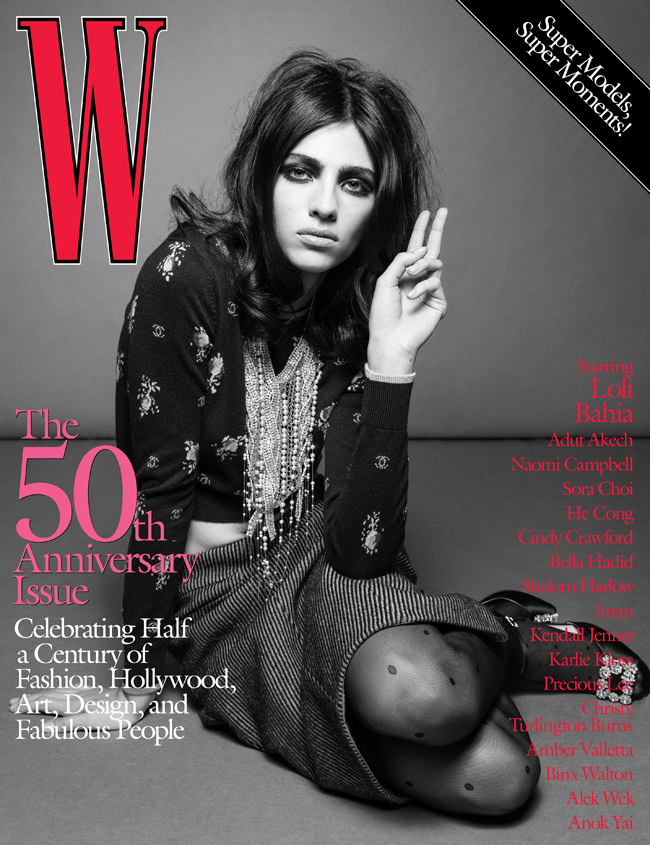
On how she became a model: “My first job was the fall 2020 Louis Vuitton show. I was still in high school, and I wasn’t sure what to do after, so I decided to give modeling a shot. I had no idea what to expect because I didn’t know anything about fashion. Now I think traveling is the most exciting part. My dream job would be to do a perfume campaign!”
Cindy Crawford
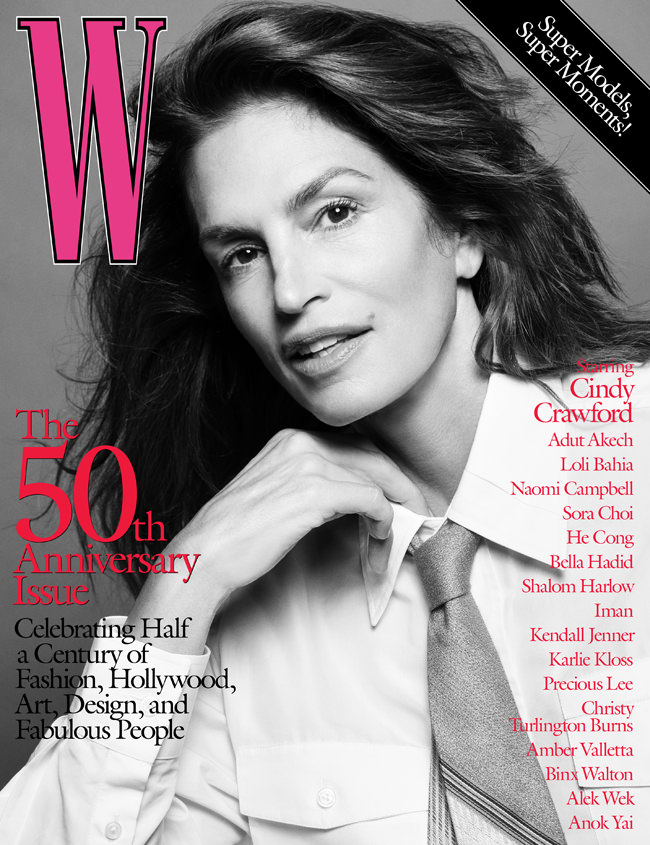
On how age hasn’t slowed her down professionally: “Being a model is, in some ways, like being an athlete. It’s a skill, and you get better at it. But, as with an athlete, your physical being changes. I’m aware that I don’t look the same as I did when I was 25, but I bring experience and confidence in front of the camera that I didn’t have then. And I still like what I do. I never thought I’d be working the way that I am at this stage.”
Alek Wek
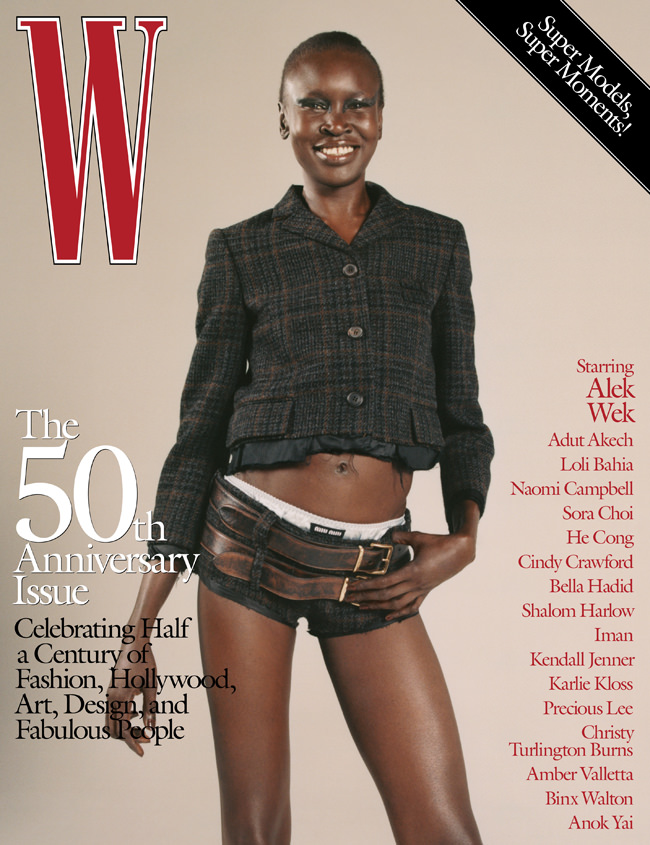
On persevering and how her story shaped who she is as a model: “Everybody has a story, but my story, I think, has a lot to say about how people can persevere. I was a kid when I started, coming from South Sudan, fleeing a civil war. Now when you see Alek Wek, you see diversity. When you see Alek Wek, you see opening doors. I never thought I would still be working at this age, and I thank my mom every day for that. It’s genetics. I’m like Benjamin Button. Nineteen-, 20-year olds try to chat me up!”
Binx Walton
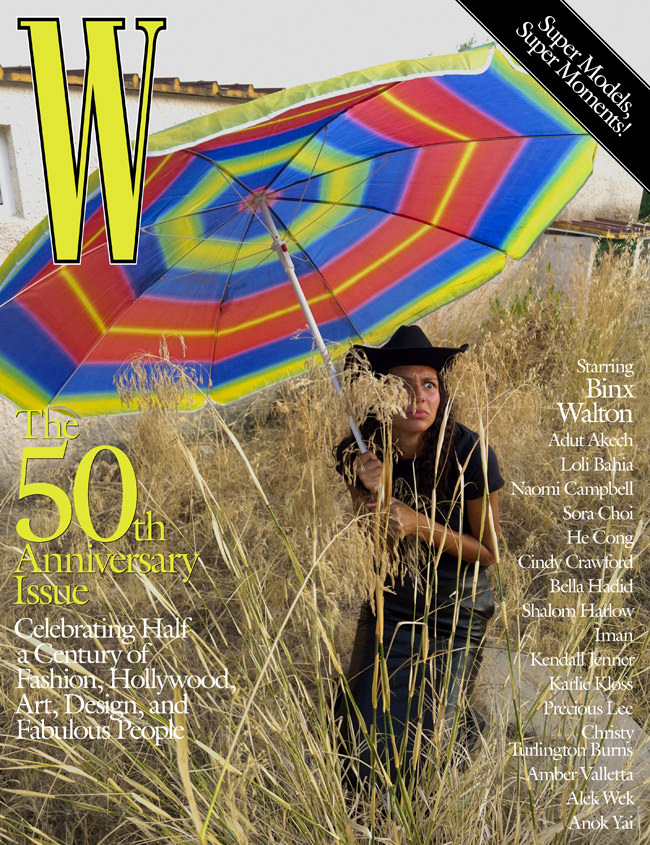
Iman
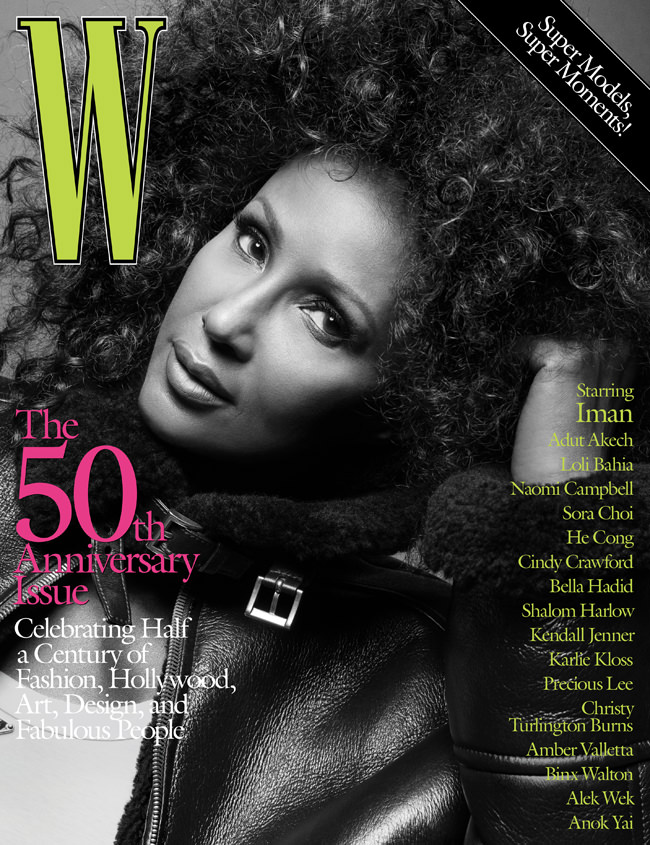
On how she shifted the narrative that there was only space for one Black model at a time: “When I arrived in the United States, there was the idea that there could be only one Black model at a time, so it created hostility and competition among us. But my friends and I changed that. In Somalia, where I’m from, I never called myself a Black woman, because there was no reason to. The whole country is Black. I had an identity based on my worth. I started becoming friends with Black models on purpose. They were the ones who were going to tell me who was the best photographer for us, who was the best hairdresser for our hair, the best makeup artist for our skin. So we became a tribe, and we still are that tribe.”
[Photo Credit: Courtesy of W Magazine]
Venice Film Festival 2022: Chris Pine in Ralph Lauren at the DON’T WORRY DARLING Premiere Next Post:
Venice Film Festival 2022: Olivia Wilde in Gucci at the DON’T WORRY DARLING Premiere: IN or OUT?
Please review our Community Guidelines before posting a comment. Thank you!

